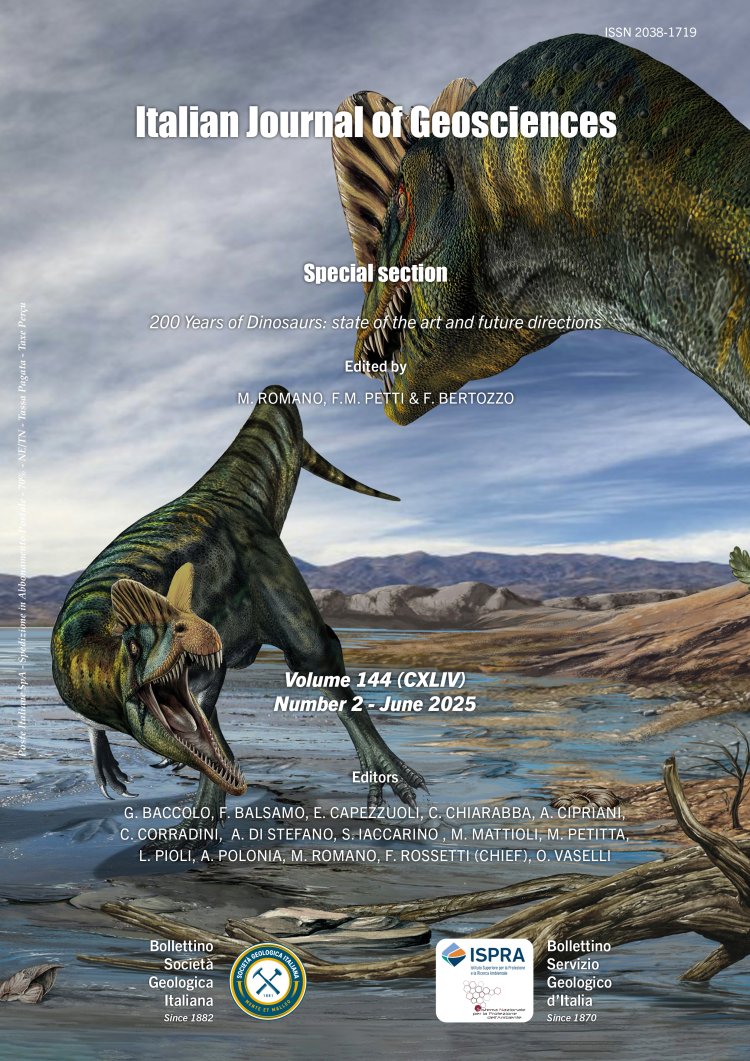

Dating the growth strata of the Gran Sasso thrust: reassessing the age of the major thrust in the central Apennines, Italy
Stefano Tavani1,2, Luca Aldega3, Marino Domenico Barberio4, Sabina Bigi3, Sergio Bonomo2, Eugenio Carminati3, Amerigo Corradetti5, Ilaria Mazzini2, Lorenzo Petracchini2, Elda Russo Ermolli1, Giovanni Schiavo1 & Andrea Billi2
1Dipartimento di Scienze della Terra, dell’Ambiente e delle Risorse, University of Naples, Italy.
2Consiglio Nazionale delle Ricerche, Istituto di Geologia Ambientale e Geoingegneria, Rome, Italy.
3Dipartimento di Scienze Della Terra, Sapienza University of Rome, Italy.
4Istituto Nazionale di Geofisica e Vulcanologia, Rome, Italy.
5Dipartimento di Matematica, Informatica e Geoscienze, University of Trieste, Italy.
Corresponding author e-mail: stefano.tavani@unina.it
Volume: 144 (2025) f.2
Pages: 283-296
Abstract
The Gran Sasso range in central Italy is the icon of the Apennines, forming the mountain front of the central Apennines. The range consists of Meso-Cenozoic carbonates overthrust onto Messinian foredeep deposits along the Gran Sasso thrust. Despite its geological relevance the age of thrusting, especially its end, is uncertain. Such age relies on speculative dating of the Rigopiano conglomerate, the youngest growth strata recording the activity of the Gran Sasso thrust, widely believed to be Early Pliocene in age. However, the reliability of this age attribution is low, being based on the supposed occurrence of marine foraminifera, of which there is no publicly available documentation. We reassess the age, depositional environment, and structural significance of the syn-kinematic Rigopiano conglomerate. Our data indicate a Late Pliocene to Early Pleistocene age and a continental depositional environment, younging the end of the Gran Sasso thrust activity. This revised age significantly increases the inferred duration of thrusting, and points to a coeval activity with the more external thrusts in its footwall.
Keywords
Get Full Text